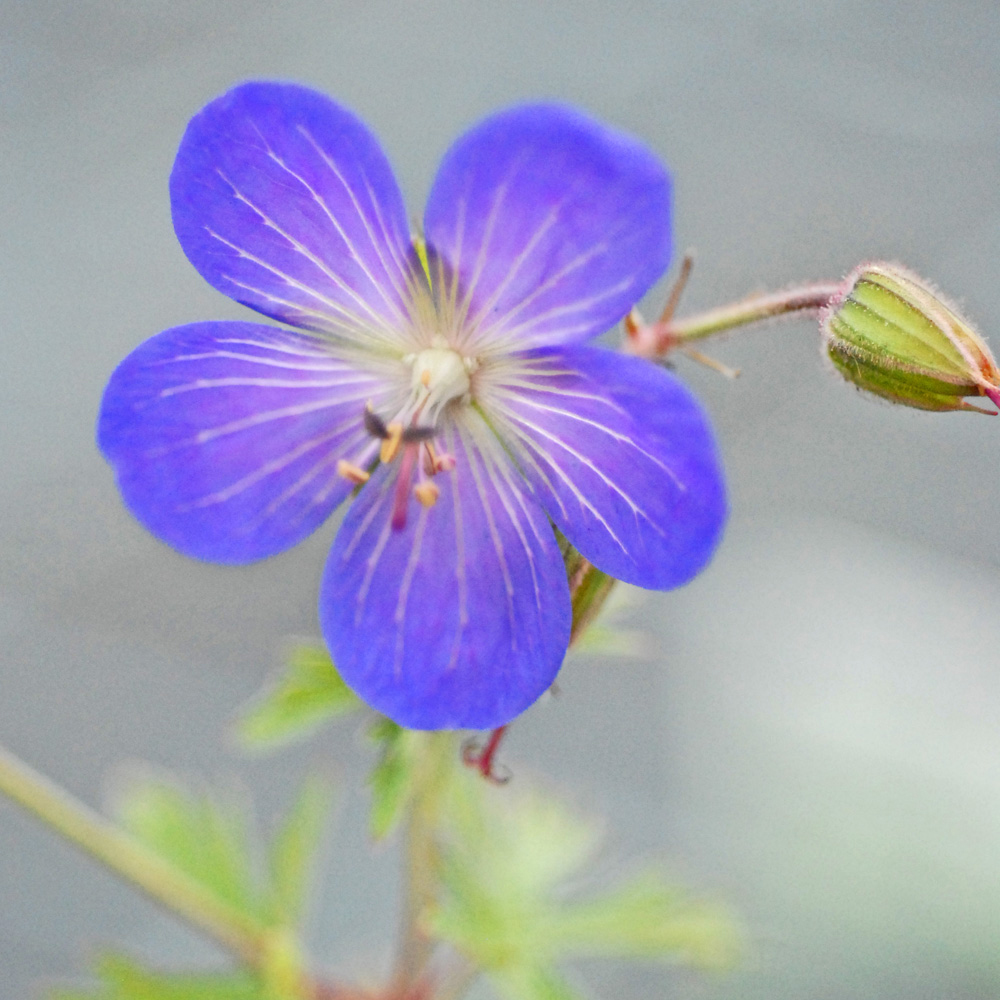
Geranium × johnsonii ‘Johnson’s Blue’, the Meadow Cranesbill Johnson’s Blue, or more simply Geranium ‘Johnson’s Blue’ is a clump forming hardy geranium with lavender, 5 petalled flowers, approximately 5 com (2 inches) across which held above attractive foliage. The plant hold’s the RHS Award of Garden Merit.
The hardy geraniums are great ground cover plants, given their spreading habit and their tolerance of partial shade. Geranium Johnson’s Blue is always a great garden choice because it typically flowers profusely over a long period in early and mid-summer and has one of the most striking flower colours among the blue Geraniums, as well as a nice reddening of its foliage in autumn/fall.
Plant Notes

Family
Geraniaceae.

Plant Type
Deciduous herbaceous perennial.

Soil Type
Will grow any most soil types with moderate fertility, except if waterlogged.

Aspect
Needs full sun or partial shade.

Eventual Size
Height: 30 to 60cm (1 to 2 feet).
Spread: 60 to90cm (2 to 3 feet).

Plant Calendar: Geranium Johnson’s Blue
Sow seeds: Feb, March, April
Plant Out: May, June, July, Aug
Flowers: May, June July, Aug.
Garden Uses: Geranium Johnson’s Blue
You can use Geranium Johnson’s Blue in all sorts of planting schemes. It works very well as an underplanting to shrubs or small trees and can also be grown in pots or containers, raised beds or other patio-type planting.
To my mind, however, the best use of hardy geraniums (including Johnson’s Blue) is at the front of deep borders, with taller perennial plants, such as Thalictrums, behind.
Caring for Geranium Johnson’s Blue
Hardy geraniums prefer moderately fertile soil, so will not need much feeding expect in very depleted or very sandy soils. Keep reasonably well watered in the growing season, but don’t allow the plant to become waterlogged.
These are plants that spread through their underground rhizomes – which is great because they provide more ground cover, but also makes it pretty easy to propagate the plant.
Propagation can be done by division – which means digging up the plant and dividing the clump into two, three or four sections, depending upon how big the clump is. You may be able to pull the clump apart, otherwise I usually use a sharp kitchen knife for dividing perennials of this type. Divide your plants in early spring.
You can also propagate by taking basal cutting in mid-spring. This means cutting off new shoots at their base and rooting in a pot with a sharp/gritty compost mix.
It is always a good idea to cut back the spent flowers and older foliage after hardy geraniums have first flowered as this will encourage fresh growth and possibly a second flush of flowers.
Hardy geraniums can suffer from powdery mildew and face attack by capsid bugs. Keeping the plants healthy with sufficient water and a good mulch can help with resisting attack.
Martin Cole has been an avid gardener for more than 20 years and loves to talk and write about gardening. In 2006 he was a finalist in the BBC Gardener of the Year competition. He is a member of the National dahlia Society.
He previously lived in London and Sydney, Australia, where he took a diploma course in Horticultural studies and is now based in North Berwick in Scotland. He founded GardeningStepbyStep.com in 2012. The website is aimed at everybody who has been bitten by the gardening bug and wants to know more.
Gardening Step by Step has been cited by Thompson and Morgan, the UK’s largest mail order plant retailer, as a website that publishes expert gardening content.
Check out my comprehensive step by step guide, with plain language explanations and ultra-useful images and illustrations. This is for you if you love dahlias and want to the best out of the dahlias you grow.
*by entering your details, you're agreeing to the gardeningstepbystep.com terms and conditions and privacy policy. You can unsubscribe at any time.


